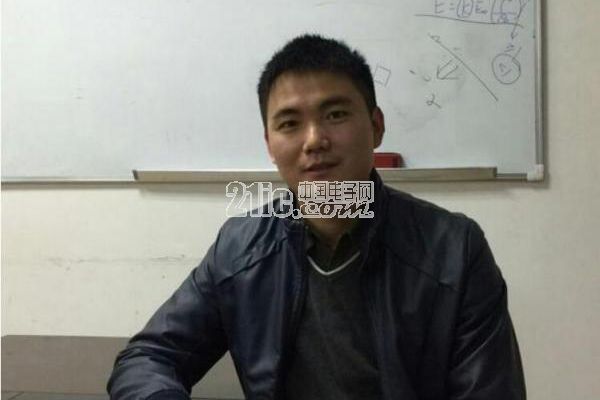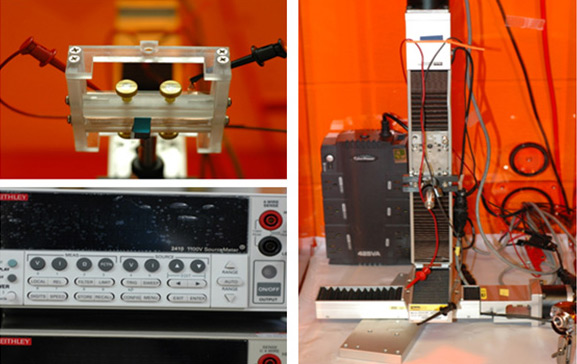Proton exchange membranes can reduce fuel cell costs by half?
As the core component behind hydrogen fuel cells, proton exchange membranes have been monopolized by DuPont in the United States since the 1960s.
This article refers to the address: http://
With the release of Toyota Mirai and Hyundai ix30 fuel cell vehicles, the layout of hydrogen refueling stations in the United States, Japan and Europe has been rolled out. Hydrogen fuel cells have been plagued by their high specific energy density, excellent energy conversion efficiency and truly clean energy characteristics. attention.
However, as the core component behind hydrogen fuel cells, Proton Exchange Membrane (PEM) has been monopolized by DuPont since the 1960s.
Therefore, when I heard that the professor of Electronic Science and Technology, He Weidong, and the team's proton exchange membrane developed in the laboratory can compete with DuPont's products, and the cost is only one tenth of the latter, the car cloud is still very exciting. .
Therefore, the car cloud found He Weidong, around its technical breakthroughs in fuel cell materials, as well as the prospects of China's fuel cell technology and other issues.

He Weidong, Professor of Electronic Science and Technology
What kind of "film"?
For ordinary users, the proton exchange membrane is undoubtedly a rather unpopular word. However, its significance for fuel cell vehicles can not be underestimated.
The first is cost.
According to He Weidong, the core system of fuel cells is a stack, and its cost can account for about 60% of the entire fuel cell. The cost structure of the stack is dominated by platinum-based catalysts and proton exchange membranes. According to the current market situation, a square centimeter of nafion membrane (DuPont's proton exchange membrane model) requires a few yuan or even nearly ten yuan, and the demand for proton exchange membranes for each vehicle fuel cell is square meters. This means that the cost of tens of thousands or even hundreds of thousands of fuel cell stacks is entirely attributed to the proton exchange membrane.
Second is efficiency.
The efficiency here mainly refers to the proton conductivity of the proton exchange membrane, because in principle, the proton exchange membrane provides a channel for the migration and transport of protons, so that protons pass through the membrane from the anode to the cathode, and the electron transfer from the external circuit forms a loop. The current is supplied to the outside world, so the proton conductivity value is proportional to the performance of the proton exchange membrane.

Proton exchange membrane developed by He Weidong team
According to He Weidong, his team has developed a new pulping process and film-forming process. The proton exchange membrane produced by the circular mold can reach the order of hundreds of square centimeters. It is worth noting that He Weidong said that its proton conductivity is 1.78 times that of DuPont's Nafion 117 proton exchange membrane, and the cost is about one-tenth of that of DuPont's proton exchange membrane. It is reported that he hopes to make some breakthroughs in improving the controllability of material porosity, hole shape and thickness.

He Weidong team developed its own electrophoresis platform
The meaning of a "film"
Of course, the meaning of the proton exchange membrane is not only related to the cost and quality of the fuel cell vehicle itself or a single fuel cell. As everyone knows:
On the one hand, hydrogen can be used as a high-energy energy carrier with high energy density, and the natural cleansing characteristics of lithium battery technology make China face no serious environmental problems.
On the other hand, the high technical barriers of fuel cells have made it difficult for the domestic fuel cell industry to break through, and there are a series of technical problems that need to be resolved in all aspects of hydrogen production, storage and transportation.
Therefore, once the ring of proton exchange membranes is opened, it seems that it can solve the single point problem of fuel cell vehicles, and in fact, the entire fuel cell industry chain can be opened.
Not only that, He Weidong also said that as a basic material with better scalability, the research significance of proton exchange membrane is not necessarily the promotion of Xing Energy Automobile.
However, He Weidong's current research on proton exchange membranes is still in the laboratory stage, and he is also looking for opportunities for industrialization. Previously, the photocatalyst products developed by He Weidong have begun mass production.
USB C HUB,6 in 1 Type C Hub with Ethernet, 6 in 1 USB-C hub to HDMI,USB-C 6-in-1 Multiport Adapter,6 in 1 Multiport USB-C,USB-C Adapter Docking Hub
Shenzhen Konchang Electronic Technology Co.,Ltd , https://www.konchang.com